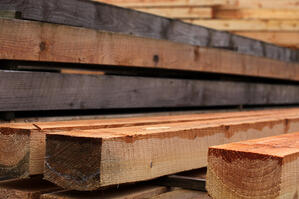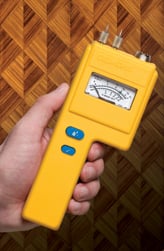 Picture the following scenario:
Picture the following scenario:
You’ve spent weeks assembling a new wood chair for your house. Every day, you’ve carefully measured, cut, and shaped each piece of lumber into the perfect piece of furniture for your living room or deck.
However, just a couple of days after finishing, you start to notice that the glue holding the joints of the chair together never bonded properly, and the paint's starting to peel. Seems that the wood used in the chair was slightly too wet. This excess moisture kept the adhesive and paint from bonding properly, compromising the quality of your woodwork.
Even for a non-professional hobbyist, monitoring the moisture content of wood can be vital. This is where moisture meters for woodworking become important.
Why are moisture meters essential for wood hobbyists?
There are many reasons involving the safety, quality, and longevity of your woodwork.
Safety
The story presented above is an example of an all-too-common consequence of not checking the moisture content of the wood you use for a personal project—weakened materials and joints.
Excess moisture in wood can cause it to weaken, making it easier to break under a load or when sudden force is applied; such as when someone sits on a chair. The tendency for excess moisture to interfere with the adhesive bonding process can also weaken key joints. As the wood dries, it could split and crack as well, making it likely to splinter under a load.
All of these issues make the chair unsafe by increasing the risk of injury. Moisture meters help prevent these safety issues by allowing you to spot moisture-compromised or damaged wood before you use it to make something in the first place.
Quality
 There’s nothing quite like the sense of satisfaction you get from a job well done. Taking a pile of wood and turning it into a hand-crafted object takes time, effort, and dedication. It’s only natural to want to make sure that the end result is top quality.
There’s nothing quite like the sense of satisfaction you get from a job well done. Taking a pile of wood and turning it into a hand-crafted object takes time, effort, and dedication. It’s only natural to want to make sure that the end result is top quality.
The %MC of wood can have a significant impact on the quality of the final product you make for a few reasons.
First, wood is a hygroscopic material. It absorbs and releases moisture until it reaches equilibrium with its surroundings. So, if the wood is too dry for the surrounding air, it can start to swell up. If wood is too wet, it will lose water, and may start to shrink or crack as a result. These issues are easier to fix before shaping wood than they are to fix afterwards.
Second, excessive moisture can cause adhesives to not bond to the wood correctly, compromising the integrity of adhesive-joined bonds. Other items, such as paint, may peel or bubble away from the surface of wet wood as well.
Combined with the chance that wood could swell, warp, or crack, this means that the aesthetic appeal of your woodwork could be ruined. By using a moisture meter, however, you can ensure that your woodwork is free of these moisture-related problems.
Longevity
After taking hours and hours to build something by hand, you’d probably want to make sure that it lasted more than a few days.
By using moisture meters to check the moisture content of wood, you can make sure that your wood isn’t moisture-compromised before you start to work with it. Finding excess moisture early lets you dry the wood out sooner rather than later—or avoid using bad wood altogether.
This greatly reduces the risk of the wood you use rotting away or being weakened by mold and excess moisture.
While moisture meters are far from the only tool you need for your woodworking projects, they can be a very important tool for increasing safety, quality, and longevity for your hand-crafted products.

Comments